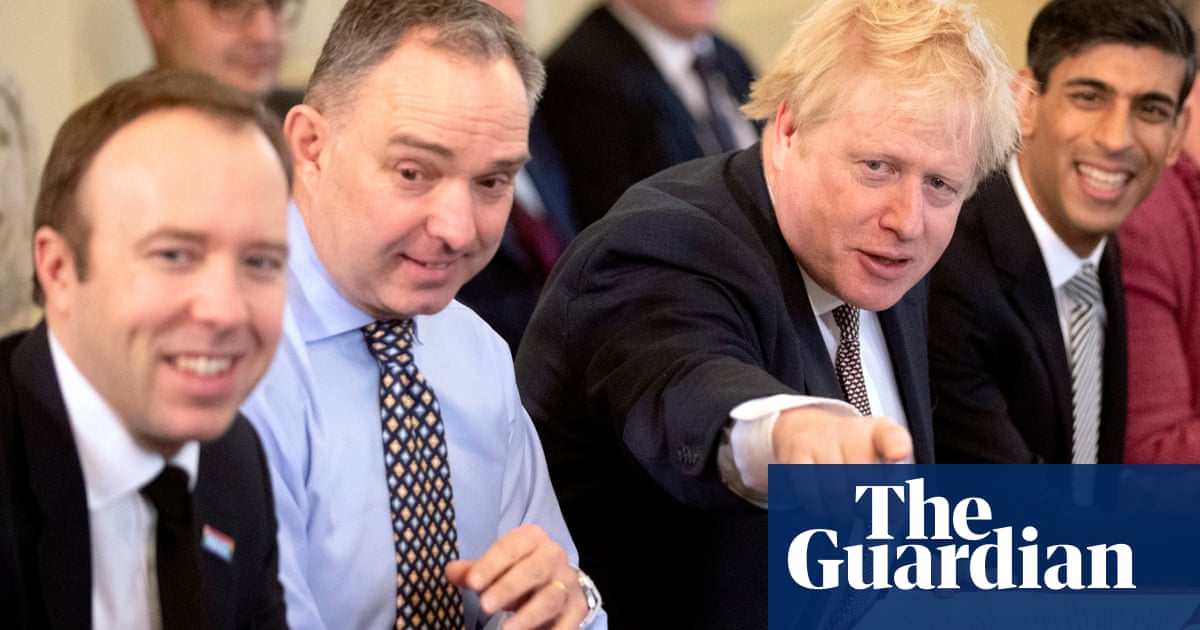
If you Google Boris Johnson while online in India, a brilliant YouTube video shows him at the Gateway of India in Mumbai, doing bewildering things on a very small bicycle. Built during the British empire to welcome King George V on his visit to the country in 1911, it is now a tourist site populated by young lovers, wastrels, pickpockets and photographers trying to scam foreigners. The video was shot in 2012, when Johnson was mayor of London. Loiterers look on, baffled by this British man in a suit going round in circles, being chased by photographers who eventually give up.
It was a strange way to promote British-Indian trade, a bit like an Indian prime minister sitting on a wild elephant in the middle of the Royal Albert Hall, telling the world that India is open for business. The goal was to increase “bilateral deals”. This term, which no one understands, is often accompanied by photos of British and Indian diplomats sitting at very long colonial tables with leather folders and tea, smiling like extras in a Raj-era film. The British look as if they can’t wait for the meeting to end so that they can go off and buy custom suits at half-price, while the Indians look relieved, probably because whatever it is they are trying to negotiate, at least it isn’t independence.
At some point, someone decided that these trips to India had to look more fun. Former prime minister David Cameron played cricket in Mumbai in 2013 and wore all black, like a character in a Versace biopic. He had a couple of lovely cover-drives before he was clean bowled by a young woman. In 2016, ex-PM Theresa May visited a temple in Bengaluru and made headlines because she wore a traditional sari and got all the Hindu prayers right. In 2017, mayor of London Sadiq Khan partied with Indian billionaires and Bollywood stars, both demographics being his key constituents, as they probably own more of central London than Londoners.
Johnson, when he wasn’t cycling, had enough jokes, charm, and call-backs for his visit to qualify as a standup routine. Its trade purpose, however, was more ambivalent, triggering this Guardian headline: “Boris Johnson continues to charm and confuse on visit to India.”
As an Indian comedian who spends a fair bit of time in the UK, I know that a sizable section of Britain despises Johnson, his very name causing them to spew expletives, froth and even faint. That is not how he goes down in India. Among the Indian business elite he often addresses, and will again on this new visit, he reinforces the idea of an Englishman that a certain older generation of Indians know from classic BBC comedies: a mix of Basil Fawlty, Mr Bean and Jim Hacker from Yes, Prime Minister, with just the right dash of Oxbridge erudition to sound wise without remotely being so. The Indian elite audiences love that: a kedgeree of wit, posh accents, bumbling vulnerability, and praise disguised as information.
He was a hit in 2012. But 10 years is a long time. India now has its own hugely popular leader, Narendra Modi, a global star who can work a stadium crowd. Modi has played to rapturous audiences from Wembley to Madison Square Garden in New York. The press have analysed how Modi’s shows differ from Beyoncé’s, as if this were a serious comparison.
If Johnson wants to hold his own, we’ll need more than Mumbai cycling. There is, of course, our version of Strictly, called Dance India Dance. He could ride a tuk-tuk around the Prince of Wales Museum in Mumbai (name now changed to the more tourist-friendly Chhatrapati Shivaji Maharaj Vastu Sangrahalaya). Or he could deliver a spoken-word performance on the drunken habits of Mughal kings, at midnight under moonlight at the Taj Mahal. The potential is endless.
There have been misfires with other world leaders. US President Trump, while addressing a massive stadium in Gujarat, mispronounced the name of India’s greatest cricketer Sachin Tendulkar, calling him “Soo-chin”. Prime minister Trudeau of Canada landed wearing such garish Indian outfits that the local press thought he had come as a best man at a Punjabi wedding.
Johnson knows India too well to make those mistakes. He has read enough Kipling to know that it is not fashionable to read Kipling any more. But, problematically, India no longer sees Britain as a great trade partner but as one of many options. If anything, the UAE, Russia, Israel and the US are closer, maybe because they show up with hard cash, not bike clips. India has moved on, even if its politicians still make policy while sitting in British-built buildings. Britain, meanwhile, feels like the upset ex-husband who can’t understand why it all ended.












